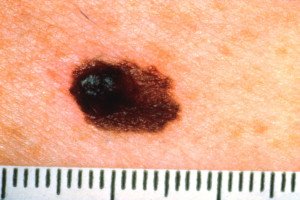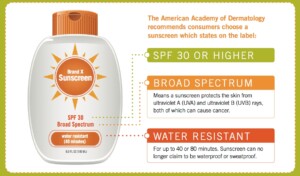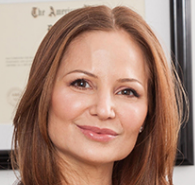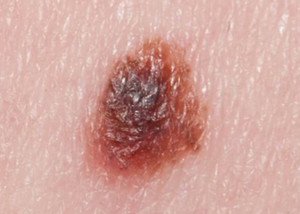![]()
Skin cancer surgeon Dr. Monica Halem comments about teens with many moles.
Have you looked at your teen’s skin lately for moles? Are you even aware of how many moles your teen has?
My nephew at 14 had quite a few pigment spots all over his back, and some on his neck and arms.
He’s older now but they’re still there: not pinpoint moles, either. Many are almost pencil eraser diameter.
His parents were never concerned their teen had a lot of moles, and having many is a significant risk factor for deadly melanoma skin cancer.
But if your teen has a lot of moles, what could you possibly do?
After all, it’s not advisable to have the spots removed as a “just in case” measure.
But there IS something that parents can do if their teens have a ton of moles: Educate them about the dangers of excessive sun exposure. This can’t be said enough.
And the education should come early in life, long before kids hit their teen years, though in early life, they will most likely not have so many moles — most develop after birth and before age 20.
Waiting until a child is a sun-worshipping teen to educate about healthy skin is not a smart move. When my bronzed nephew was 14, I noticed his back while we were on a boat.
As a teen he’d spent every summer doing lake activities such as tubing, water skiing, wakeboarding and jet-skiing.
Furthermore, he spent a lot of time on the boat: a lot of sun exposure.
He also golfed: more sun galore. He obviously never wore much sunscreen, as he was very tanned whenever I saw him.
On the boat when he was 14, I got a close-up of all this teen boy’s back moles. I concluded that his well-meaning (and very tanned) parents didn’t feel concerned.
Though melanoma is extremely rare among teens, it is on the rise among teens.

Melanoma
Furthermore, the melanoma that a person gets in his 40s, 50s or 60s, might very well be the result of lots of sun tanning during the teen years!
It can take decades for melanoma to develop. The “seeds” for melanoma can be planted during childhood and teen sun exposure.
“Any teen who spends time in the sun is at risk for developing skin cancer, especially melanoma,” says Dr. Monica Halem, MD, a dermatologic surgeon who specializes in skin cancer surgery, laser and cosmetic surgery.
My nephew’s mother had always been on top of getting her son checkups during his teen years for his acne.
But she was out of the loop regarding all the sun that his many moles had gotten year after year.
Dr. Halem continues: “Teens with an increased number of moles are particularly susceptible. The presence of moles is alone an increased risk factor for skin cancer.
“To add sun exposure on top of that makes things worse. Anyone with several moles should get a yearly exam by a dermatologist and should wear sunscreen daily with an SPF of 30 or higher.”

 Dr. Halem, Founder and Medical Director of The New York Dermatologic Surgery Cosmetic Laser Center, has devoted a decade to clinical research, conducting trials that have advanced cosmetic and surgical dermatology.
Dr. Halem, Founder and Medical Director of The New York Dermatologic Surgery Cosmetic Laser Center, has devoted a decade to clinical research, conducting trials that have advanced cosmetic and surgical dermatology.
 Lorra Garrick has been covering medical, health and cybersecurity topics for many years, having written thousands of feature articles for a variety of print magazines and websites. She is also a former ACE-certified personal trainer.
Lorra Garrick has been covering medical, health and cybersecurity topics for many years, having written thousands of feature articles for a variety of print magazines and websites. She is also a former ACE-certified personal trainer.
.


























